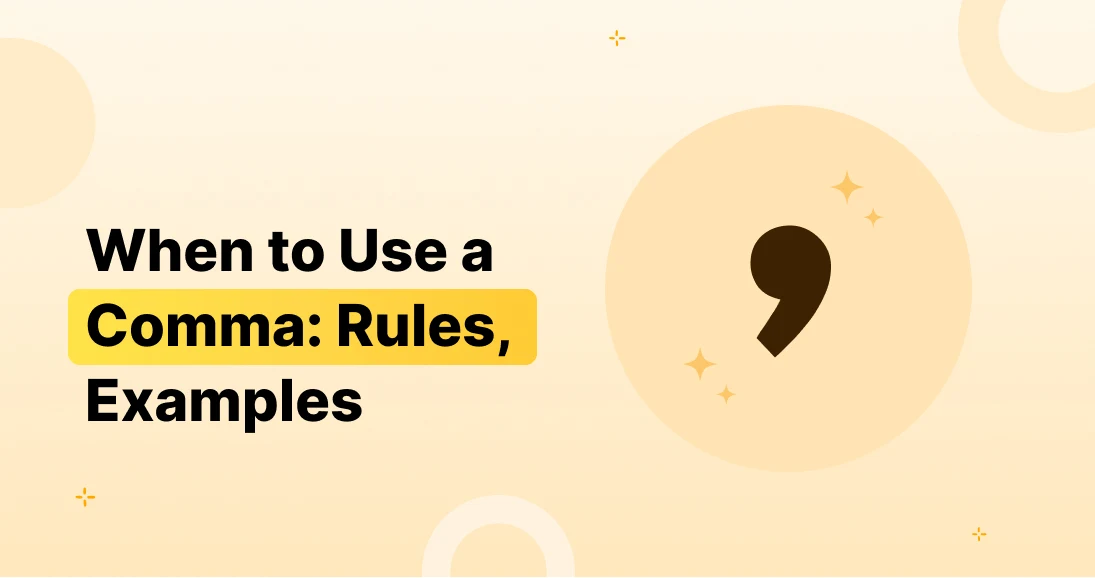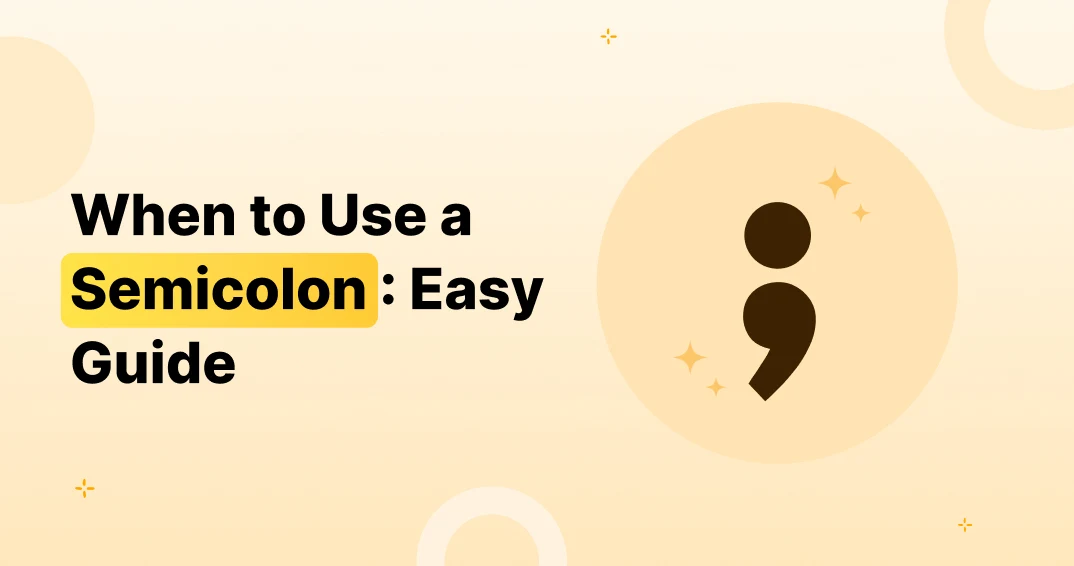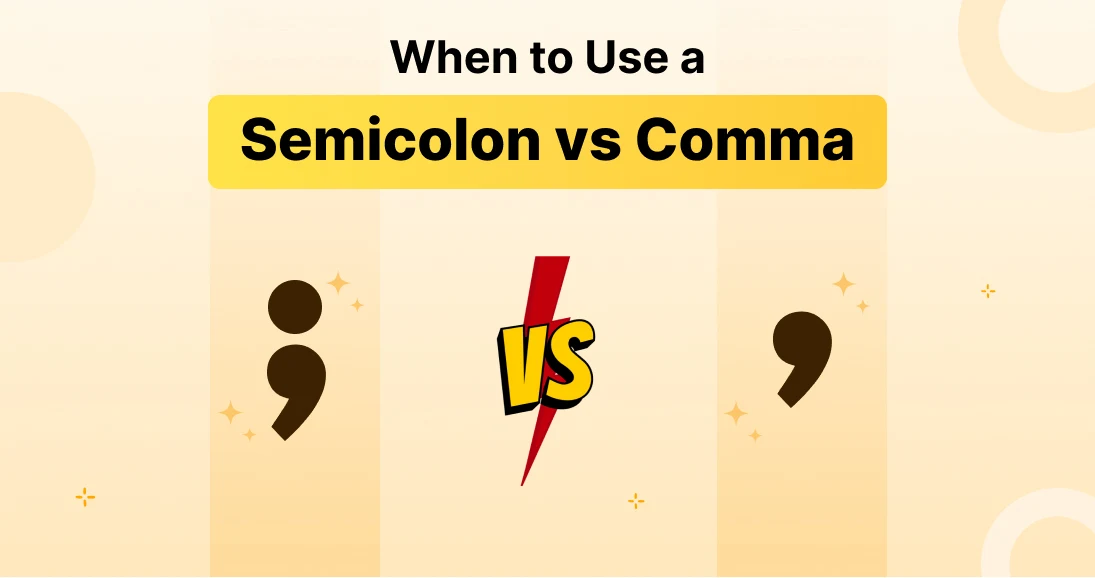Knowing when to use a comma can completely change the meaning of a sentence. This tiny punctuation mark adds readability, breaks up your mind, and makes your writing less complicated to observe. But in case you use it in the incorrect place, it can cause confusion quickly.
Whether you’re drafting a proper email, writing content for social media, or sending a message in the use of smart equipment like textual content shortcuts, sturdy comma usage allows you to talk clearly. In this manual, you’ll study the maximum crucial comma regulations, which includes unusual examples and neglected grammar errors—like in which to position a comma after “Good morning” or “Dear Sarah.”
Key Takeaways
- Learn when to use a comma in a sentence and how commas affect clarity.
- Understand the rules for using commas after greetings, names, and transitional phrases.
- Find out if you need a comma after good morning, “Dear,” or “Welcome.”
- Master comma use in quotes, lists, and direct addresses.
- Clear up the confusion around comma and semicolon rules (we’ll also compare the two!).
- Avoid common errors people make with commas in everyday writing and digital text.
What Is a Comma, and Why Does It Matter?
A comma is a punctuation mark that signals a pause or separation in a sentence. It’s now not simply decorative — it clarifies that meaning, prevents ambiguity, and enables your phrases to go with the flow logically. When used correctly, commas guide the reader, giving them clues on a way to interpret your message.
Think of commas like traffic signs in your sentence:
They tell the reader when to slow down, when to stop, and when ideas are connected or separate.
For instance:
- “Let’s eat, Grandma.” vs “Let’s eat Grandma.”
That one comma literally saves lives. 💀
When to Use a Comma in a Sentence
Understanding when to use a comma in a sentence begins with the basics. These are your go-to cases where commas should always be used.
1. After Introductory Words or Phrases
Whenever a sentence begins with a transition or prepositional phrase, you usually need a comma.
Examples:
- However, we decided to move forward with the plan.
- In the end, she won the award.
This type of pause helps your sentence breathe — especially important when you’re working with auto-generated texts using tools like Using AI Chat Feature.
2. To Separate Items in a List
Lists are one of the most common places for commas. The serial comma (aka Oxford comma) before the final “and” is optional, but recommended for clarity.
Example:
- I ordered coffee, toast, eggs, and orange juice.
Leaving out the Oxford comma can lead to misinterpretations — particularly in rapid-paced text environments like emails or even Shrug Emoji Text conversations.
3. Between Independent Clauses Joined by a Conjunction
Use a comma earlier than coordinating conjunctions like and, however, or, nor, so, but if the clauses on each aspect can stand by themselves.
Example:
- She wanted to go hiking, but the weather ruined her plans.
Not using a comma here is a frequent punctuation misstep — and could confuse your message, especially when used alongside iPhone Text Effects that rely on rhythm and flow.
4. To Offset Non-Essential (Parenthetical) Elements
When you’re adding more records that might be removed without changing the center that means, you operate commas to offset it.
Example:
- My sister, who lives in Boston, is visiting next week.
Removing “who lives in Boston” still leaves a grammatically correct sentence. That’s how you know commas are needed around the phrase.
Commas in Names, Greetings, and Salutations
5. Should You Put a Comma After “Welcome” and a Name?
Absolutely. When addressing someone directly, a comma is required to separate the greeting from the name.
Example:
- Welcome, James.
Not using a comma here can make the sentence seem robotic or even aggressive.
6. Do You Put a Comma After “Good Morning”?
Yes. And the same rule applies to different greetings, like “Hello” or “Hi.”
Correct:
- Good morning, team.
- Hello, Anna.
Incorrect:
- Good morning team
This is one of the most common errors in digital writing — one you’ll want to avoid even when using Text Shortcuts or templates in messaging apps.
7. Comma After Salutation in a Formal Letter
Many people wonder, “do you put a comma after dear in a letter?” Yes, you do.
Correct:
- Dear Mr. Taylor,
You should also know how this connects with the broader rules of punctuation in professional writing — something also discussed in guides like How to Use Quotation Marks.
8. Does a Comma Go Before or After Someone’s Name?
It depends on context:
- If you’re describing the person, no comma:
Example: My friend John is here. - If you’re addressing the person, use a comma:
Example: John, could you help me?
This rule becomes especially useful in emails or chat messages where tone and clarity matter.
Comma Usage in Dates, Addresses, and Numbers
9. Commas in Dates
Use commas when writing full dates, especially between the day and the year.
Correct:
- She was born on April 22, 2025, in New York.
If only the month and year are used, no comma is needed:
- He graduated in May 2020.
10. Commas in Addresses
When writing full addresses in a sentence, commas are essential to separate parts.
Example:
- The package was delivered to 123 Main Street, Austin, Texas, on time.
Skip the comma between the street number and name, but use it between city and state, and after the state when the sentence continues.
11. Commas in Large Numbers
To improve readability, use commas in numbers with four or more digits.
Examples:
- 1,000
- 25,000
- 1,000,000
In most formal writing (especially in the U.S. English), this rule is universally generic.
When to Use a Comma Instead of a Semicolon
Let’s briefly discuss the difference between a comma and semicolon, because confusion is commonplace here — specifically in compound and complex sentences.
12. Comma or Semicolon?
Use a comma whilst unbiased clauses are joined by using a coordinating conjunction (like and, but, so).
Example:
- She wanted pizza, but they ordered sushi.
Use a semicolon when two independent clauses are closely related but not joined by a conjunction.
Example:
- She wanted pizza; they ordered sushi instead.
13. Semicolon vs Comma Examples
| Sentence | Correct Usage |
| I went to the store, I forgot my wallet. | ❌ (Comma splice) |
| I went to the store; I forgot my wallet. | ✅ (Correct semicolon use) |
This is where understanding comma vs semicolon rules really helps prevent confusing or run-on sentences.
Avoid These Common Comma Mistakes
14. Don’t Use a Comma Between Subject and Verb
Incorrect:
- The best part of the day, is lunch.
Correct: - The best part of the day is lunch.
Never separate a subject and its verb with a comma, unless there’s a phrase or clause in between that needs commas.
15. Don’t Overuse Commas in Compound Subjects or Objects
Incorrect:
- Sarah, and Tom went hiking.
Correct: - Sarah and Tom went hiking.
Too many commas can confuse the reader and break the natural rhythm of your writing.
16. Know Where to Put Commas in Complex Sentences
With dependent clauses, placement depends on the clause position:
- Beginning of sentence: Use a comma.
If it rains, we’ll stay inside. - End of sentence: Usually, no comma.
We’ll stay inside if it rains.
Final Thoughts: Mastering Comma Rules Makes You a Better Communicator
Learning when to use a comma is one of those grammar skills that pays off across every form of communication — from emails and essays to texts and social media posts.
Here’s the truth: proper punctuation shapes how your words are received. Whether you’re writing a formal message, chatting online, or using advanced tools like iPhone Text Effects, Text Shortcuts, or AI-driven keyboards, good grammar is the base that keeps everything polished.
By now, you’ve seen how commas play a key role in:
- Greeting phrases and direct addresses
- Breaking up ideas clearly
- Separating parts of dates, numbers, and addresses
- Avoiding ambiguity in complex and compound sentences
Still wondering about other punctuation marks? You may also want to explore How to Use Quotation Marks — especially if you’re quoting dialogue, using citations, or formatting content for digital platforms.
Whether you’re revising a message or decoding a meme with Shrug Emoji Text?, understanding comma usage helps you write with purpose and confidence.








